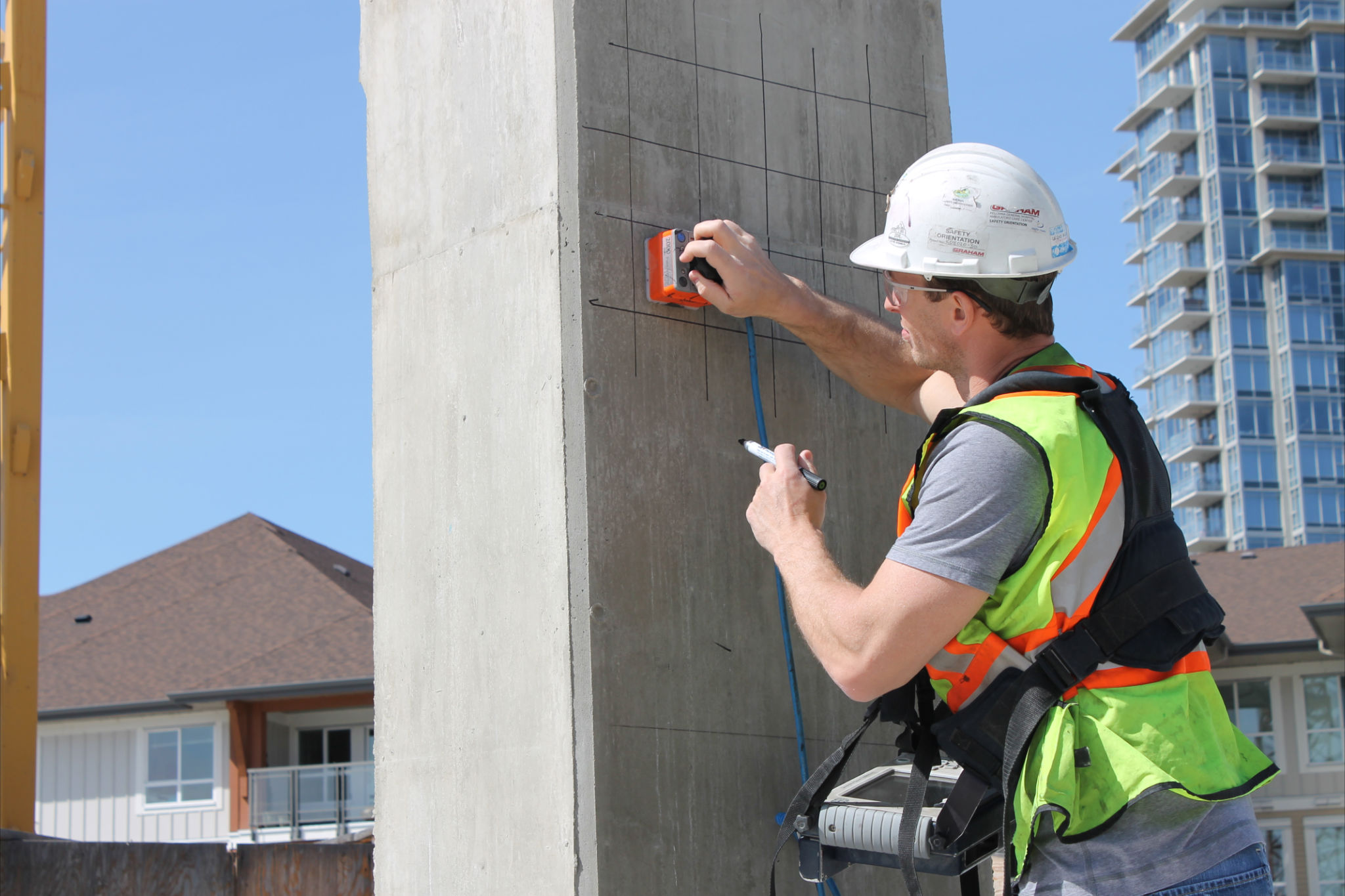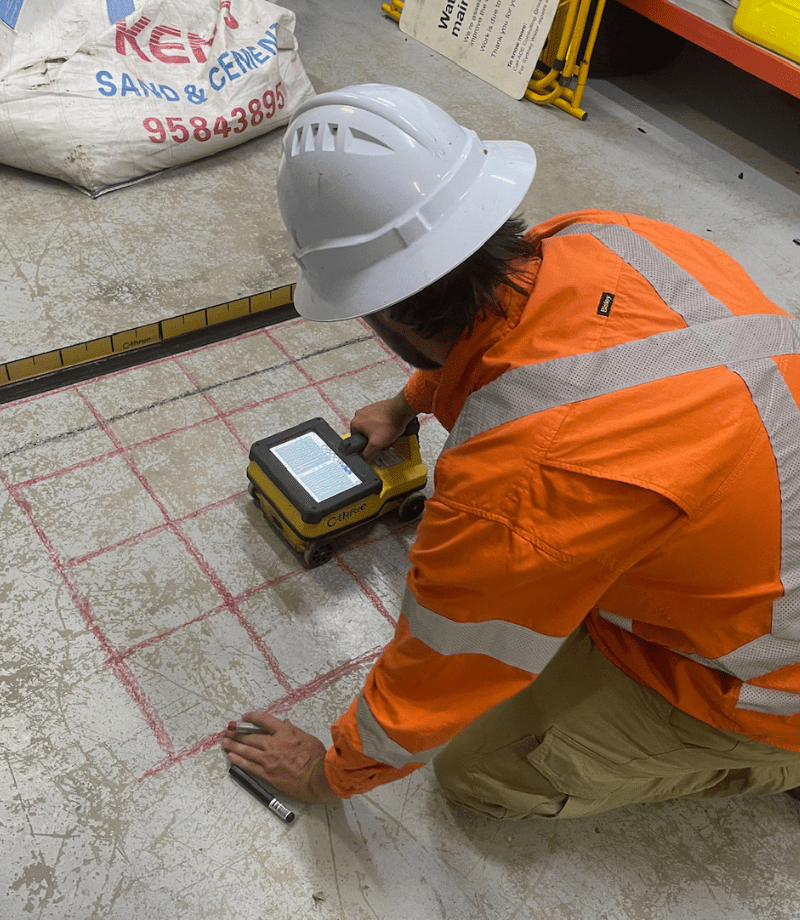Looking Into Accuracy: the Duty of Concrete Scanning in Enhancing Construction Security and Effectiveness
In the world of modern-day construction methods, the details of safety and security and efficiency have become vital factors to consider. Concrete scanning, a modern technology that has actually gained significant traction in the market, plays a vital duty in boosting these fundamental aspects of building jobs. By using a specific understanding right into the make-up and format of concrete frameworks, this cutting-edge method not only enhances precaution on site but also adds to optimizing project planning. The implications of concrete scanning extend far past surface-level advantages, guaranteeing a deep-rooted influence on the total success of building and construction undertakings.
Relevance of Concrete Scanning Modern Technology
Concrete scanning innovation plays an essential duty in making sure the security and architectural stability of building tasks. By using various scanning approaches such as Ground Permeating Radar (GPR) and electromagnetic induction, building and construction teams can identify embedded things, rebar, channels, and various other prospective blockages within concrete structures prior to commencing any type of drilling or reducing activities. This innovation helps stop accidental damages to vital framework, minimizes the danger of structural failures, and improves overall task effectiveness.
In addition, concrete scanning enhances worker safety and security by offering precise details about the condition of concrete aspects, permitting teams to plan and carry out building tasks with accuracy. The capacity to visualize subsurface functions in real-time allows task supervisors to make enlightened decisions, reduce prospective dangers, and stick to predict timelines effectively. Additionally, by identifying any type of abnormalities or flaws early on, construction teams can implement corrective steps quickly, preventing expensive rework and delays in the building process.
Basically, the significance of concrete scanning innovation exists in its capacity to secure building and construction tasks, simplify procedures, and maintain the greatest requirements of safety and quality in the sector.
Enhancing Precaution on Website

Concrete scanning innovation plays a vital function in enhancing security by permitting construction groups to properly locate prospective threats such as rebar, conduits, and post-tension cords installed within concrete structures. By determining these threats ahead of time, workers can take needed preventative measures to avoid mishaps throughout exploration, reducing, or coring activities. This proactive technique not just safeguards the health of workers but likewise aids in protecting against expensive damages to the structure.
Integrating concrete scanning into security procedures demonstrates a commitment to prioritizing security on building sites, ultimately leading to more efficient and successful job results.
Enhancing Construction Project Preparation
Effective project preparation is necessary for the successful implementation of building and Discover More Here construction jobs. Optimizing building and construction job planning entails a careful method to scheduling, source allotment, and risk monitoring. By leveraging sophisticated technologies like Structure Information Modeling (BIM) and concrete scanning, project supervisors can improve the preparation process and boost general project performance. BIM enables for the creation of in-depth 3D models that give understandings into the spatial partnerships between numerous job elements, aiding to identify prospective clashes and conflicts beforehand. Furthermore, concrete scanning enables the accurate discovery of subsurface utilities and frameworks, reducing the threat of costly hold-ups and rework throughout the construction stage. By integrating these technologies into the preparation stage, building groups can proactively address difficulties, improve sychronisation in between different professions, and make sure that projects are finished promptly and within budget plan. Ultimately, enhancing building and construction job preparation is essential for maximizing efficiency, lessening waste, and delivering effective end results in the built environment. Concrete Scanning.
Decreasing Task Hold-ups and Dangers
To alleviate job delays and risks, meticulous preparation and aggressive danger monitoring methods are vital in the building industry. Delays in building and construction tasks can lead to significant financial losses, harmed online reputations, and also security risks. By utilizing concrete scanning modern technology, building and construction groups can identify possible dangers such as underground energies, rebar, or post-tension cords before they escalate right into expensive issues. This aggressive method permits changes to be made to the job plan, decreasing the chance of hold-ups because of unanticipated barriers.
Having contingency plans in place her comment is here for usual threats in building and construction, such as adverse climate problems or product scarcities, can aid minimize the influence of these variables on task timelines. By focusing on planning and risk management, construction teams can minimize project delays and risks, ultimately leading to extra reliable and effective results.
Improving Total Performance and Performance
Offered the importance of thorough preparation and positive danger administration in reducing job delays and threats in building, an emphasis on improving overall performance and efficiency ends up being essential. Improving efficiency and productivity in building and construction jobs involves simplifying procedures, enhancing resource allocation, and decreasing downtime. Using sophisticated modern technologies like concrete scanning can dramatically contribute to attaining these objectives. By accurately drawing up subsurface utilities and frameworks before excavation or boring, possible clashes and rework can be prevented, conserving time and resources. In addition, real-time data given by scanning technologies permits for quick decision-making on-site, boosting and decreasing hold-ups performance. Enhanced effectiveness also translates to far better project timelines, cost financial savings, and improved client contentment. Investing in tools and methods that focus on performance and efficiency not just advantages specific building jobs yet additionally adds to the general growth and success of the building and construction sector.

Conclusion
In verdict, concrete scanning innovation plays an important role in boosting building safety and performance by enhancing safety actions on site, optimizing task planning, decreasing delays and threats, and eventually increasing total efficiency. This technology is crucial for making sure the successful completion of building and construction jobs while focusing on the security of employees and reducing possible risks. Its execution can substantially benefit the building and construction industry in attaining higher degrees of precision and efficiency.
Concrete scanning technology plays an important duty in making sure the safety and security and structural stability of building and construction projects. Furthermore, by recognizing any abnormalities or issues early on, building and construction teams can execute rehabilitative measures quickly, staying clear of costly rework and delays our website in the building procedure.
Efficient job preparation is important for the successful implementation of construction jobs. Spending in devices and practices that prioritize efficiency and productivity not only benefits private building jobs however additionally adds to the total development and success of the construction industry.
In conclusion, concrete scanning technology plays an essential function in enhancing construction safety and efficiency by improving safety and security actions on website, maximizing task preparation, lessening risks and delays, and inevitably raising total performance. - Concrete Scanning